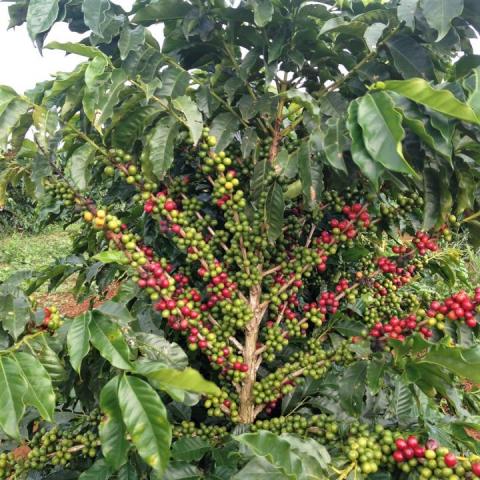More than 2 billion cups of coffee are consumed worldwide, which means coffee beans used in all those lattes, espressos and mochas create a livelihood for millions of people worldwide.
Yet coffee plant production remains decidedly low-tech, and gimmick labels like "organic" and "fair trade" keep developing nations growing coffee stuck in the past. That has resulted in a "biennial effect" in yields, where years with high yields are often followed by years with low yields. The biennial effect makes it challenging for coffee breeders to compare yields from different varieties of coffee. Without accurate measures of yield, breeders cannot know which varieties of coffee would be most useful for farmers to grow.
A new computational model compensates for the biennial effect in coffee. This model reduces experimental error. It also increases the usefulness of data obtained from field trials. In turn, the model directly impacts the quality of coffee varieties supplied to farmers. These findings could reduce the cost and time to launch a new coffee variety into the market by half, the authors estimate, and it could also help farmers improve yields.

'Catigua', one of the most popular commercially-grown cultivars in Brazil. Credit: César Elias Botelho
Using information from the model, farmers could tailor cultivation strategies to individual plants. Effective management of growing conditions directly impacts harvest quality and yields.
Importantly they found that the biennial effect in coffee doesn't follow a well-defined pattern, as previously thought. Instead, some coffee plants can have reasonably stable yields across years. Other plants may have high yields for two years and reduced yields in the third. The new model also allows researchers to determine why individual coffee plants may have high or low yields each year. Some coffee plants with high yields may belong to high-yielding varieties. However, the plants of high-yielding varieties may produce low yields during recovery years.
The next step would be to incorporate more genetic information into the current model. This would allow researchers to study genetic control of the biennial effect. Understanding the genetic basis of the biennial effect could be very useful. For example, it might allow breeders to identify coffee varieties with more uniform yields across multiple years.
Coffee isn't the only crop to show biennial effects. Apple trees, for example, also exhibit biennial effects.





Comments